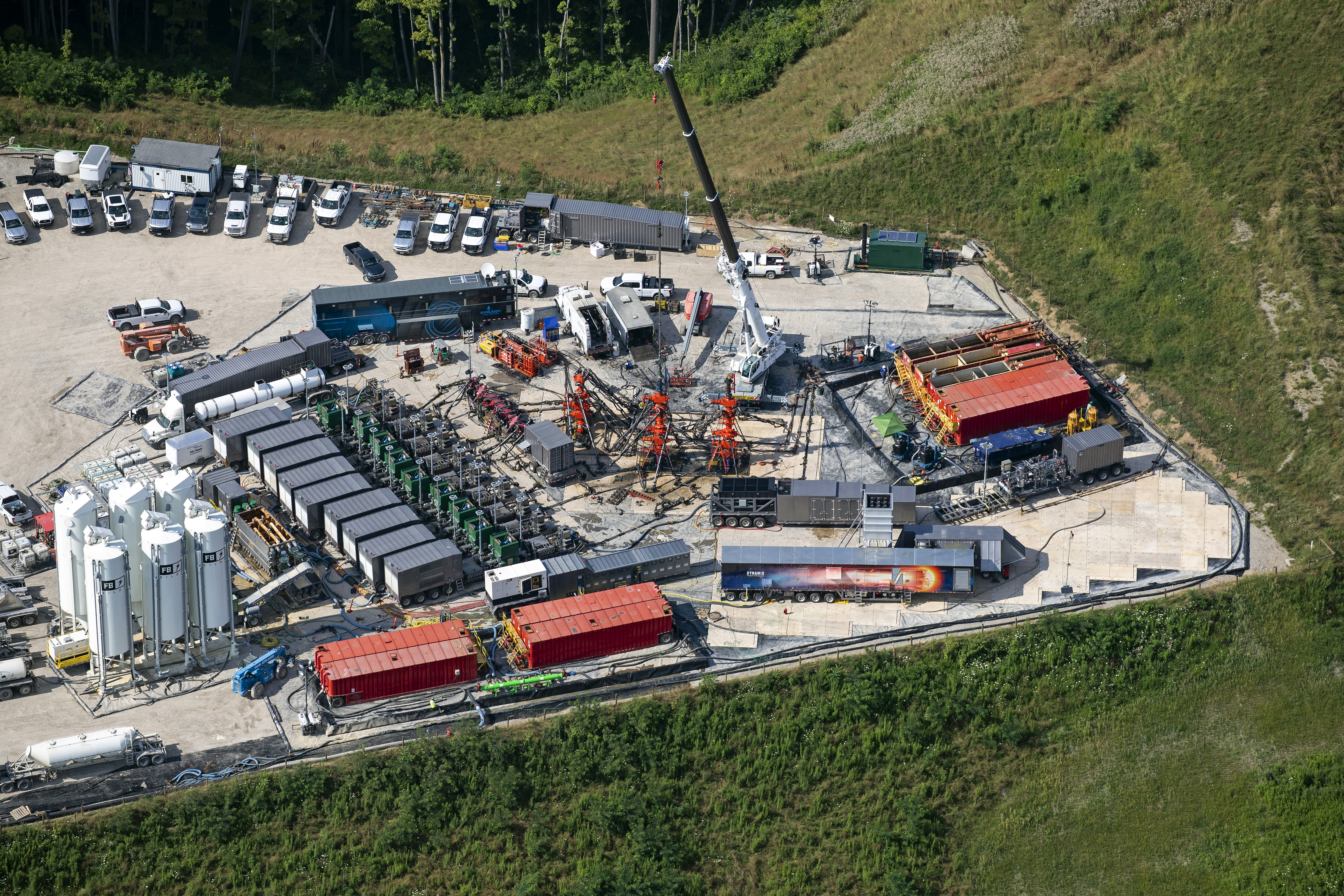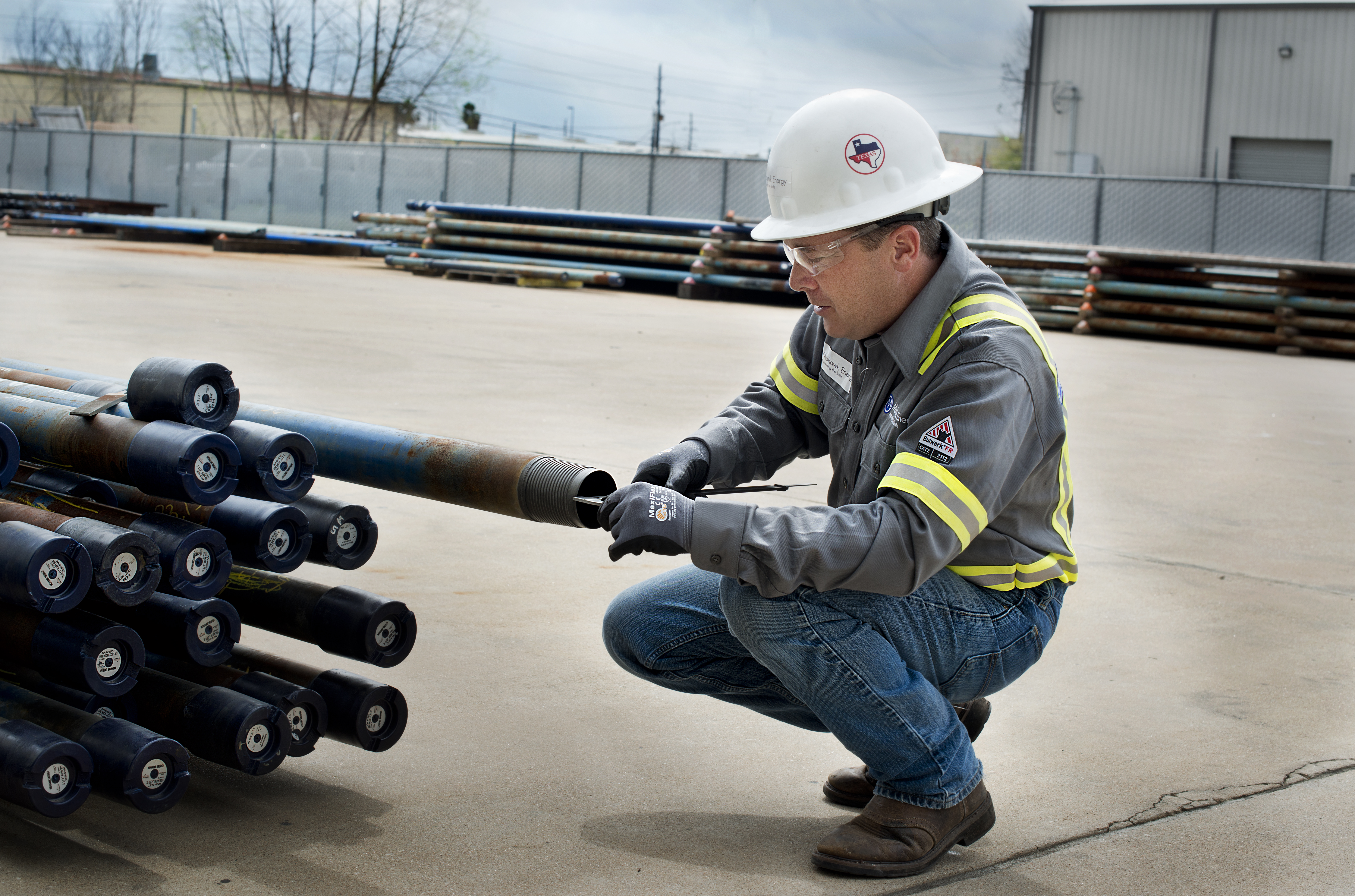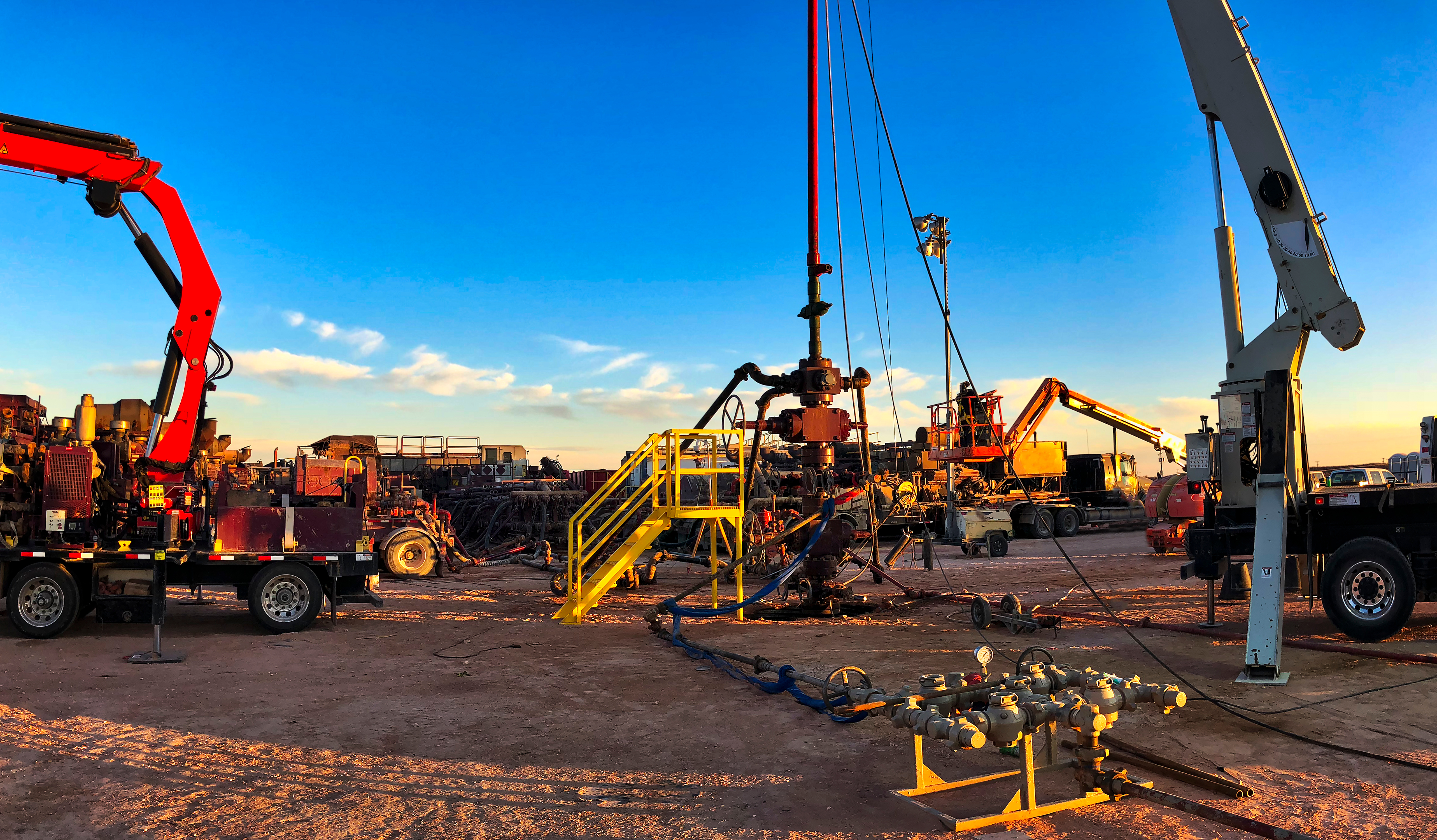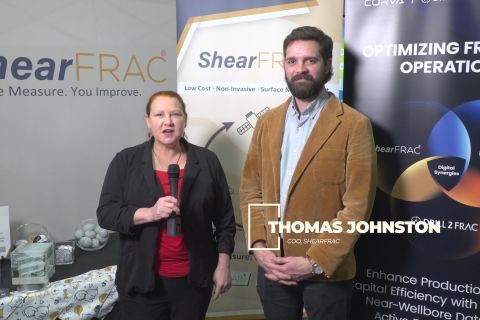[Editor's note: This story originally appeared in the December 2019 edition of E&P. Subscribe to the magazine here.]
The technological innovations during the past several years have resulted in remarkable advancements in unconventional development, particularly in optimized completion designs. Now the ingredients for success in the current economic climate for operators and service companies are shifting amid tightening budgets toward a focus on optimizing production and reduced capex. Operators are challenged with increasingly more and more complex hurdles to recover as many hydrocarbons as possible from a reservoir. At the same time, they must keep up with the evolution of the industry’s technological advancements.
The application of digital technologies such as machine learning and artificial intelligence (AI) promises streamlined operations, less risk and substantial cost savings. Electric fracturing fleets, or e-frac, also claim significant savings while providing an environmental benefit through reduced flaring. Meanwhile, operators and service companies are constantly considering ways to optimize the production of wells that, for whatever reason, did not produce up to expectations. An emerging application in some basins is well refractures, although such applications come with some hesitancy on cost and ultimate recovery benefits.
Such applications and technologies are representative of what some industry experts see as a transitioning of priorities to doing more with less, solving problems such as parent/child well interactions, applying the most efficient applications to recover the most oil and gas and, ultimately, realizing the optimum revenue.
“The industry at large seems to be moving away from the focus on ‘more,’” said Tobias Hoeink, senior director of stimulation software and AI at Baker Hughes. “A few years ago, the focus was on more acreage, more wells and more production. And now I see the focus shifting, driven in part by the investment community’s demand for sustained profitability and cash flow. And this goes to the problem of optimization. Rather than focusing on well spacing directly, companies can focus on profit or net present value or even profit over a given time frame, which I think might be the key metric.”
Emerging e-frac option
Operators in today’s industry are faced with a multitude of challenges separate from just simply producing oil. They must deal with investor demands, a finicky marketplace, labor issues and HSE requirements. Operators also are faced with growing concerns over environmental impacts. One concern is centered on flaring associated natural gas where in many cases it’s not profitable to get it to market, particularly in the Permian Basin. Meanwhile, fuel costs for pressure pumping fleets can run into the millions of dollars per well, proving to be a primary cost in fracturing operations. According to Universal Pressure Pumping, diesel fuel usage can exceed 20,000 gal/d on one frac spread.
An emerging option for both the flaring and fuel cost challenge is e-frac fleets. Rather than using traditional diesel-powered fleets, e-frac fleets are powered by natural gas.
“They are typically running on field natural gas, the hydrocarbons that you’re producing from the well,” said Jared Oehring, vice president of technology for U.S. Well Services, a service provider that specializes in e-frac fleets. “The electric frac fleets feed back along the sales line, so there’s not really any additional infrastructure costs. You can send gas to the turbine using the exact same pipeline that you were going to be using to get oil and gas from the well to the marketplace.”
Oehring said interest in different basins in North America for e-frac has mirrored demand for traditional fracturing fleets.
“More people in the Permian are interested in frac services, so more people in the Permian are interested in electric frac services than, say, in the D-J [Denver-Julesburg Basin],” he said. “So it’s not basin-specific. Wherever overall demand is, that’s where we find the most demand as well for electric frac.”
EOG Resources, Exxon Mobil and Shell are among the companies that have adopted e-frac fleets. CNX Resources announced last year that it was deploying an e-frac fleet from Evolution Well Services in the Appalachian Basin.

Earlier this year, Baker Hughes deployed its first e-frac fleet in the Permian Basin. According to the Baker Hughes website, the company’s e-frac fleet reduces fleet sizes by up to 40% and eliminates diesel truck logistics and associated engine noise.
A Bloomberg article from July noted that e-fracking could cut fuel costs by as much as $1 million a month.
“We have had one customer that told us that it cut their overall cost for completing a well by 18%,” Oehring said. “Most of our customers are saving $1 million to $1.5 million per month per fleet on their fuel. So that ends up being a significant savings for our customers.”
In an online discussion by IHS Markit, Jesus Ozuna, senior associate, principal research analyst at IHS Markit, said e-fracking is most conducive in areas where there might be stricter regulations on sound pollution or emissions.
“But you could still use it out in a regular fracking site out in the middle of nowhere simply because of some of the cost reductions that are there when it comes to fuel costs,” he said.
But as Ozuna noted in his discussion, the primary barrier to widespread adoption of e-frac is the initial cost, which could run as much as $60 million, often twice as much as a traditional frac fleet.
For operators that are looking to shelve pumping units and cut costs, such upfront expenses are giving some companies pause.
“The downfall is the entry to use the technology,” Ozuna said. “On average, to go in and have an equivalent to a 45,000-hydraulic-horsepower fleet, it costs you around $60 million. So it’s a significant increased cost versus other technologies, which you can use natural gas, like dual-fuel or dynamic gas blending, where it costs only $3 million to do a conversion.”
Oehring said low maintenance costs for e-frac fleets and the cost savings in diesel fuel result in the ultimate economic benefit.
“Now that we’re having 24/7 zipper fracs, higher pressures and higher rates, we’re just ripping this diesel equipment apart,” he said. “The life of electric fleets is so much longer. They cost a little bit more in the beginning, but instead of having an engine needing to be rebuilt at year three or five, having a motor that lasts for 25, 30 years is just a huge strategic cost advantage. The electric frac unit just runs day after day with very little maintenance at a higher uptime.”
Refracs
Operators and service providers continually chase new technologies and best practices to apply with the goal of recovering as many hydrocarbons from a reservoir as possible. Larger completion jobs and ever-increasing fracturing jobs are resulting in record amounts of production for U.S. unconventional development. But of course, not every well produces at its optimum level. Whether understimulated or poorly designed, or for any number of other reasons, wells often leave behind substantial quantities of oil and gas that initially were believed to be recoverable.
One avenue available to operators and service providers chasing those left-behind reserves is refracs. Although the application has yet to take on widespread use, there is a belief that with more of a track record of success, refracs could be on the cusp of being more widely applied.
Dale Larsen, senior business development manager for NewWell Tech, a service company that specializes in refracs, explained that the best candidates for possible refracs are wells whose production has not met expectations or whose completion design was inadequate.
“Your best case is to refrac a well and achieve your IPs from the original frac job,” Larsen said. “Or another instance would be if your original frac job was five to eight years old or older and it was egregiously underdesigned, had an exceedingly small number of stages or was understimulated.”
The time frame to consider a possible refrac is largely dependent on the basin and the individual engineering approach to a particular well, Larsen said.
“But I think it would be fair to say that in most shale basins, after three years’ surveillance, production engineers could start looking at wells as potential refrac candidates and start identifying them,” he said.
NewWell Tech’s service is a well preparation technology in which a liquid is pumped into existing fracture pathways and perforations and becomes pliable in a day or two. The residue is then drilled out, which allows the well to be reperforated in whichever pay zone the operator chooses to refracture.
“Our advantage is that we are allowing a refrac to become more effective with this method by blocking off the depleted and lower-pressure intervals that might take a subsequent refrac and therefore render it useless, or a lot much less effective,” Larsen said.
Although Larsen acknowledged that refracs are yet to be widely adopted, the industry could be on the verge of applying refracs as more evidence of their successes and case studies on their effectiveness become widely known.
Matthew Sinkey, manager of technical engineering for the U.S. division at Calfrac Well Services, said current refracturing operations are still “somewhat limited.”
“Many of the larger operators in the Bakken and Marcellus have small refrac programs with one or two refracs per quarter, but success has varied as it takes time to determine if EUR is added or just accelerated,” he said.
Sinkey said that for an operator to consider a refracturing program, it would first need to identify a poor performing well in an area of high-performing wells that may have previously been understimulated.
“An operator is unlikely to do a refrac in an area where reservoir quality and production are poor,” he said.
A recent GlobalData analysis of 56 Haynesville horizontal wells that were refractured showed a wide variance in economic performance. According to the analysis, the 56 wells were initially completed between 2008 and 2013 and were refractured in 2017 and 2018. The wells’ IP ranged from 320 boe/d to 3,500 boe/d.
“Within this group, the 40 wells refractured by QEP Energy show a good performance; however, in many cases, productivities were improved with respect to original rates,” GlobalData reported. “Indeed, a total of 22 wells recompleted by QEP Energy reached production rates of at least 1,700 boe/d, compared to their first IP rates of no more than 1,690 boe/d.”
Meanwhile, three wells recompleted by Chesapeake in 2017 resulted in poor performance since production rates barely reached 1,000 boe/d, the report stated. Newer Chesapeake wells showed production rates of 1,740 boe/d.
“I think people are still cautious about refracs because there is a lot of planning around candidate selection,” said Taylor Huey, business development director for Mohawk Energy. “If you select the wrong well, you’re not going to get good returns.”
Mohawk Energy specializes in expandable tubular technology and casting patches, such as the ReLine MNS system. According to the company, ReLine MNS provides operators 100% mechanical isolation in the lateral that allows either the old existing perforations or newly created perforations to be stimulated.
“We’ll go in just below the last perforation or the first perforation, set a liner, terminate it somewhere in the curve, covering up pretty much the whole perforated interval,” Huey said. “We’ll recomplete the lateral section, and then the operator could go in with their conventional plug-and-perf operations.”
He said Mohawk has worked on refracs in most major shale basins, including the Permian, D-J and Eagle Ford. Wells in the Bakken are often more challenging to refracture because of the lengths of the laterals, Huey said.
“We will be doing a job in West Texas where some new laterals are being drilled alongside existing ones that have been good producers,” he said. “We will refrac those wells at the same time with; hopes of just maximizing the frac on the new drills and encouraging those fracture networks to touch new rock and not diverge toward a depleted section of rock that is close to the wellbores that had been on production for a while. We’re starting to see some of that activity as well—some kind of refracs being planned around some new completions and new drills to maximize returns on new wells.”

Digital applications
In an environment where oil and gas companies are prioritizing cutting costs and maximizing returns, operating efficiencies are among the first components to be scrutinized. Identifying where money can be saved and how best to maximize productivity are the low-hanging fruit for operators and service providers. There is a continual push to implement digital technologies that those technology providers believe will solve such problems. Analysts are beginning to agree.
“To survive and escape the boom-and-bust cycle that characterizes the shale sector, the best option for companies is to solidify gains with continuous innovation,” analysts from the Boston Consulting Group stated in a recent report on profiting from shale. “Over time, companies that can adopt new digital tools and equipment into their daily workflow will see their performance eclipse their less aggressively creative rivals.”
For example, Boston Consulting Group explained that by adopting Internet of Things technologies, like sensors placed on discovery and drilling equipment linked to data and analysis tools in the cloud, shale producers could leverage large amounts of historical and real-time data.
“From these pools of information, a picture of the most fruitful shale sites and how to best access them emerges, and [it] can form the basis of a drilling plan for a semi-autonomous or autonomous robotics rig. The result: less downtime, faster time to production, lower production costs and higher productivity,” the report stated.
Service providers are deploying digital, AI and machine learning tools and systems at a rapid pace. Reveal Energy Services announced in July the commercialization of its DSCVRi cloud-based completion evaluation engine. According to the company, the tool allows operators to consolidate their hydraulic fracturing results in one web portal and quickly identify stimulation design patterns. The DSCVRi engine features data from the region, well and stage levels. The web portal compiles data provided from Reveal’s other services—the IMAGE Frac pressure-based fracture map and FracEYE frac hit analysis service data—in a central location with formats and reports.
“Combined with interactive, standardized dashboards, the web portal lets operators test ideas and arrive at statistically valid conclusions through a continual improvement and learning process,” the company stated in a release.
Earlier this year, Emerson launched its Intelligent Multistage Completion Network, an integrated upper and lower completions downhole system that communicates wirelessly with instruments at the reservoir sandface. According to the company, the network generates zonal flow information and sandface monitoring in the lower completion. Emerson reported that the Intelligent Multistage Completion Network builds on the capabilities of the existing downhole network that has been installed in wells and uses wireless telemetry to enable communication with sensors and controls located at the reservoir.

In September, Corva, a provider of real-time drilling and completion analytics, and Drill2Frac, which specializes in rock characterization services for hydraulic fracturing design, partnered to provide advanced completion optimization services. According to the two companies, the partnership focuses on enhancing data accuracy and optimizing frac performance with the goal of increasing oil and gas production utilizing Big Data, analytics and completion engineering best practices. The service works by enabling operators to harness historical and real-time data while improving data quality by cleansing anomalies and inaccuracies.
“Optimizing completion designs to leverage heterogeneity in the lateral has shown to have a meaningful and significant impact on completions costs and well performance,” said Dharmesh Mehta, president of Drill2Frac, in a release.
According to a release, Drill2Frac’s completion design process leverages standard drilling data, proprietary data analysis technology, and interpretations from expert review to assess rock variability and identify the optimal treatment for each fracturing stage. The company said the frac optimization platform also provides engineered diversion plans to optimize fluid distribution and mitigates the risk of frac hits through offset well analysis.
“As a result, Drill2Frac enables completion designs to be rapidly tailored to the unique reservoir conditions for every well, yielding higher short- and long-term oil and gas production,” the company stated in the release.
Corva’s real-time data analytics are leveraged during the perforation, plugging, fracturing and drill-out phases of completion. By utilizing Drill2Frac design parameters, Corva enables capabilities to verify perforation and plug placement, track proppant concentration and visualize stage design compared to actual results, the company stated.
“Additional benefits for completion operations include the ability to maximize pumping and reduce nonproductive time, creating significant cost savings for operators. Post-completion, KPIs [key performance indicators] generated through Corva are used as inputs to calibrate fracture and reservoir models for future drilling projects,” the release stated.
Meanwhile, Baker Hughes’ JewelSuite Reservoir Stimulation application enables multiwell, multistage frac designs in a full 3-D geological and geomechanical context. Baker Hughes’ Hoeink said that in addition to reservoir modeling applications, other digital innovations could suggest an optimum well trajectory while also satisfying constraints such as drillability, wellbore stability and anticollision constraints.
“Well spacing in unconventionals is a different story,” he said. “Drilling and stimulation need to be considered together because the optimum well spacing is so closely coupled to the lateral extent of hydraulic fractures.”
He noted that for emerging trends, like cube developments or staggered well configurations, the vertical component of the well also should be considered.
“My go-to technology in this space would include proper optimization techniques on an integrated technology stack,” Hoeink said. “And to make this work, you would need to combine all of the following: well-planning tools, frac modeling tools, production forecasting tools and economic modules in a single platform.”
The nature of shale wells, with their high IP and rapid decline in production, presents unique challenges to operators looking to maximize their capital margins. And with operators shelving drilling units and generally cutting back on activity, digitalization technologies are playing a role in determining the best economics.
“In North America, rapid decline curves dictate short time frames of one to three years,” Hoeink said. “I think integrating the technical and economic pieces together can really help here. We can begin to leverage uncertainty as well, both in the subsurface and in the business model, to make decisions on well placement, completions and treatments from a portfolio perspective, and not only from a single, isolated decision perspective. I want to enable the industry to predict the probability of persistent profit.”
SIDEBAR:
Hess Explores EOR Advances through University Partnership
Dow and DOE join a grant-funding venture designed to improve stranded oil recovery.
In the ongoing effort to extract more stranded hydrocarbons from reservoirs, Hess, Dow and the U.S. Department of Energy (DOE) have partnered in a joint program to fund research at the University of Wyoming (UW) on foam assisted EOR technologies.
In August the DOE contributed $8 million as part of a grant research and field pilot test program for which Dow, the UW and Hess also contributed a combined $2 million. Researchers at UW believe foam-assisted hydrocarbon gas-injection technology could help recover 3% to 5% more of the oil in place from unconventional reservoirs.
“The main driver for us is really to have the ability to recover more crude oil from unconventional reservoirs,” said Khalid Shaarawi, senior manager for Bakken technology at Hess. “Right now, a significant portion of oil is left behind during primary depletion. So we want to find a way to get more oil out of the ground, unlocking those billions of barrels left behind.”
Shaarawi said that if an eventual test pilot for the technology is successful, it would be a “game changer” for recovering stranded reserves.
Srini Prasad, head of reservoir engineering for Hess, said the research being conducted at UW builds upon previous efforts that initially focused on applying gas injection as an EOR process.
“What we have found is that the gas injection works in the lab,” he said. “It can extract oil, but one of the problems we have is breakthrough issues because of the natural and hydraulic fractures in the reservoir. That’s the reason we are embarking on this next stage of EOR where we are going to be using foam, using chemicals developed by Dow, where we test it in the lab and then field-test it to be able to do a better job of enhancing the recovery than just using gas injection.”
Prasad said that field-testing on Bakken EOR has been conducted on a smaller scale, but this venture will be the first large-scale pilot for Hess.
Mohammed Piri, UW researcher and Wyoming Excellence Chair in Petroleum Engineering, said the knowledge gained throughout the course of the research project will be used to calibrate computational simulations to predict field performance better, assess and mitigate potential risks, and ensure successful implementation in the field.
According to Hess, the EOR research will be conducted at an advanced experimental oil and gas research facility housed at the University’s High Bay Research Facility, which was established in partnership with Hess. Over the past six years, Hess has contributed $25 million to UW’s College of Engineering and Applied Science to improve the understanding of complex rockfluid interactions in plays such as the Bakken.
“Hess has a strategic collaboration with the University of Wyoming that does deliver a lot of value at Hess and that helps us provide solutions to meet the world’s growing energy needs,” Shaarawi said. “We rely on the University of Wyoming for its groundbreaking research capabilities as well as their high-end technical services they give us.”
Read each of E&P's "2020 Unconventional Yearbook" articles:
OVERVIEW: Oil and Gas Production Forecast: 2020 and Beyond
KEY PLAYERS: Shale Growth Slows For Top US Operators
TECHNOLOGY: E-fracs, Refracs And The Role Of Digital Technologies (see story above)
ENVIRONMENT: Stepping Up for an Environmentally Sustainable Energy Future
LNG SPECIAL REPORT:
Recommended Reading
Well Logging Could Get a Makeover
2024-02-27 - Aramco’s KASHF robot, expected to deploy in 2025, will be able to operate in both vertical and horizontal segments of wellbores.
Tech Trends: SLB's Autonomous Tech Used for Drilling Operations
2024-02-06 - SLB says autonomous drilling operations increased ROP at a deepwater field offshore Brazil by 60% over the course of a five-well program.
E&P Highlights: March 15, 2024
2024-03-15 - Here’s a roundup of the latest E&P headlines, including a new discovery and offshore contract awards.
ShearFRAC, Drill2Frac, Corva Collaborating on Fracs
2024-03-05 - Collaboration aims to standardize decision-making for frac operations.
E&P Highlights: March 4, 2024
2024-03-04 - Here’s a roundup of the latest E&P headlines, including a reserves update and new contract awards.





